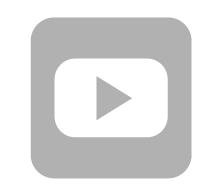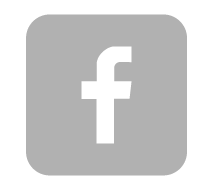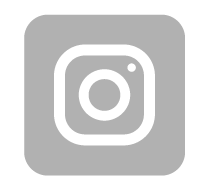-
€
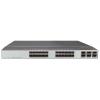
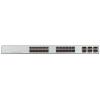
Huawei S6720-30L-HI-24S-AC es un conmutador gestionado equipado con 24 ranuras SFP+ (10 Gb/s), 4 ranuras QSFP+ (40 Gb/s) y 2 ranuras QSFP28 (100 Gb/s). La capacidad de conmutación es de 2,56 Tb/s, conmutador diseñado para el uso de redes de campus, redes compuestas por puntos de acceso y muchas otras aplicaciones. El conmutador puede gestionar hasta 1000 puntos de acceso.
El producto ofrecido admite routing IPv4 y IPv6, incluido routing estático, servidor DHCP / DHCPv6, RIPv1, RIPv2, RIPng, OSPF y OSPFv3. También admite routing multicast, incl. PIM-DM, PIM-SM (también IPv6), IGMP, MSDP o RPF. Además, proporciona soporte completo para multicast Layer 2, VLAN (incluido QinQ) y un nivel adecuado de seguridad. Permite stacking físico, el número máximo de dispositivos en una pila es 9, y un ancho de banda de 360 Gb/s. El conmutador puede actuar como cliente o como maestro SVF (Super Virtual Fabric) - es una tecnología que permite la virtualización de la arquitectura de red de conmutadores de núcleo / agregación, conmutadores de acceso y puntos de acceso a un dispositivo.
Las características más importantes:
- 24 ranuras SFP+ (10 Gb/s);
- 4 ranuras QSFP+ (40 Gb/s);
- 2 ranuras QSFP28 (100 Gb/s);
- capacidad de conmutación de 2,56 Tb/s;
- funciones de gestión Layer 3;
- la capacidad de trabajar como dispositivo maestro o cliente SVF;
- alimentador AC (pluggable).
Especificación:
| S6720-30L-HI-24S | |
| Puertos | |
|---|---|
| Puertos 10G | 24 ranuras SFP+ |
| Puertos 40G | 4 ranuras QSFP+ |
| Puertos 100G | 2 ranuras QSFP28 |
| Puertos de gestión | |
| ETH | Si |
| Consola (RJ45) | Si |
| USB | Si, USB 2.0 |
| Procesador | |
| Sincronización | 1,5 GHz |
| Cantidad de nucelos | 8 |
| Memoria | |
| Memoria RAM | 2 GB |
| Memoria flash | 1 GB, incluso 624 MB disponibles para los usuarios |
| Alimentación | |
| Tipo de alimentador | AC 600 W (desmontable) |
| Rando de voltaje recomendado |
100 - 240 V AC 50/60 Hz |
| Rando de voltaje maximo |
90 - 264 V AC 47 - 63 Hz |
| Corriente de entrada maxima | 9 A |
| Consumo maximo de energia | 279 W |
| Consumo de energia al 30% | 194 W |
| Enfriamiento | |
| Modo de enfriamiento | Activo |
| Cantidad de ventiladores | 2 |
| Flujo de aire | Desde el frente hacia atras |
|
Propiedades fisicos |
|
| Dimensiones | 420 x 220 x 43,6 mm |
| Altura | 1 U |
| Peso | 9,86 kg |
| Propiedades ambientales | |
|
Temperatura de funcionamiento admisible (a largo plazo) |
0 - 1800 m: 0°C - 45°C
El rango de temperatura desciende 1°C por cada 220 m |
|
Temperatura de funcionamiento admisible (a corto plazo) |
0 - 1800 m: -5°C - 50°C
El rango de temperatura desciende 1°C por cada 220 m |
| Temperatura de almacenamiento admisible | -40°C - 70°C |
| Humedad de aire admisible | 5%-95% sin condensación |
| Volumen a temperatura normal | 65 dB(A) |
| Volumen a alta temperatura | 88 dB(A) |
| Presión sonora a temperatura normal | 52 dB(A) |
| MTBF | 61,42 lat |
| Software | |
| Ethernet | |
| Funciones basicas Ethernet |
Rate autonegotiation on an interface Flow control on an interface Jumbo frames Link aggregation Load balancing among links of a trunk Transparent transmission of Layer 2 protocol packets Device Link Detection Protocol (DLDP) Link Layer Discovery Protocol (LLDP) Link Layer Discovery Protocol-Media Endpoint Discovery (LLDP-MED) Interface isolation Broadcast traffic suppression on an interface Multicast traffic suppression on an interface Unknown unicast traffic suppression on an interface VLAN broadcast traffic suppression VLAN multicast traffic suppression VLAN unknown unicast traffic suppression |
| VLAN |
VLAN specification: 4094 VLANIF interface specification: 1024 Access mode Trunk mode Hybrid mode QinQ mode Default VLAN VLAN assignment based on interfaces VLAN assignment based on protocols VLAN assignment based on IP subnets VLAN assignment based on MAC addresses VLAN assignment based on MAC address + IP address VLAN assignment based on MAC address + IP address + interface number Adding double VLAN tags to packets based on interfaces Super-VLAN Super-VLAN specification: 256 Sub-VLAN Sub-VLAN specification: 1K VLAN mapping Selective QinQ MUX VLAN Voice VLAN Guest VLAN |
| GVRP |
GARP GVRP |
| VCMP | VCMP |
| MAC |
MAC address: 64K Automatic learning of MAC addresses Automatic aging of MAC addresses Static, dynamic, and blackhole MAC address entries Interface-based MAC address learning limiting Sticky MAC MAC address flapping detection Configuring MAC address learning priorities for interfaces MAC address spoofing defense Port bridge |
| ARP |
Static ARP Dynamic ARP ARP entry: 55K (share) ARP aging detection Intra-VLAN proxy ARP Inter-VLAN proxy ARP Routed proxy ARP Multi-egress-interface ARP |
| Ethernet loop protection | |
| MSTP |
STP RSTP MSTP VBST BPDU protection Root protection Loop protection Defense against TC BPDU attacks |
| Detección de bucle invertido | Loop detection on an interface |
| SEP | SEP |
| Smart Link |
Smart Link Smart Link multi-instance Monitor Link |
| RRPP |
RRPP Single RRPP ring Tangent RRPP ring Intersecting RRPP ring Hybrid networking of RRPP rings and other ring networks |
| ERPS |
G.8032 v1 G.8032 v2 ERPS semi-ring topology ERPS closed-ring topology |
| IPv4/IPv6 forwarding | |
| Routing IPv4 y unicast |
IPv4 static routing VRF DHCP client DHCP server DHCP relay DHCP policy VLAN URPF check Routing policies IPv4 routes: 55K RIPv1 RIPv2 OSPF BGP MBGP IS-IS Policy-based routing (PBR) |
| Routing multicast |
IGMPv1/v2/v3 PIM-DM PIM-SM MSDP IPv4 multicast routes: 32K (share) IPv6 multicast routes: 2K Multicast routing policies RPF |
| Funciones IPv6 |
IPv6 protocol ND ND entry: 22K (share) ND snooping DHCPv6 snooping RIPng DHCPv6 server DHCPv6 relay OSPFv3 BGP4+ IS-IS for IPv6 IPv6 routes: 22K VRRP6 MLDv1/v2 PIM-DM for IPv6 PIM-SM for IPv6 |
| Layer 2 multicast | |
| - |
IGMPv1/v2/v3 snooping IGMP snooping proxy MLD snooping Multicast traffic suppression Inter-VLAN multicast replication |
| MPLS y VPN | |
| Funciones basicas MPLS |
LDP protocol Double MPLS labels Mapping from 802.1p priorities to EXP priorities in MPLS packets Mapping from DSCP priorities to EXP priorities in MPLS packets |
| MPLS TE |
MPLS-TE tunnel establishment MPLS-TE tunnel specification: 256 MPLS-TE protection group |
| VPN |
MCE GRE tunneling GRE tunnel specification: 512 VLL PWE3 VPLS MPLS L3VPN IPSec Efficient VPN |
| Confiabilidad | |
| BFD |
Single-hop BFD BFD for static routes BFD for OSPF BFD for IS-IS BFD for BGP BFD for PIM BFD for VRRP |
| Stacking |
Service interface-based stacking Maximum number of stacked devices: 9 Stack bandwidth (Unidirectional): 360 Gb/s |
| VRRP | VRRP standard protocol |
| Ethernet OAM | |
| EFM (802.3ah) |
Automatic discovery of links Link fault detection Link troubleshooting Remote loopback |
| CFM (802.1ag) |
Software-level CCM 802.1ag MAC ping 802.1ag MAC trace |
| OAM association | Association between 802.1ag and 802.3ah |
| Y.1731 |
Unidirectional delay and jitter measurement Bidirectional delay and jitter measurement |
| Funciones QoS | |
| Traffic classification |
Traffic classification based on ACLs Configuring traffic classification priorities Matching the simple domains of packets |
| Traffic behavior |
Traffic filtering Traffic policing (CAR) Modifying the packet priorities Modifying the simple domains of packets Modifying the packet VLANs |
| Traffic shaping |
Traffic shaping on an egress interface Traffic shaping on queues on an interface |
| Congestion avoidance |
Weighted Random Early Detection (WRED) on queues Tail drop |
| Congestion management |
Priority Queuing (PQ) Weighted Deficit Round Robin (WDRR) PQ+WDRR PQ+WDRR Weighted Round Robin (WRR) PQ+WRR |
| ACL | |
| Filtrado de paquetes Layer 2 - Layer 4 |
Number of rules per IPv4 ACL: 6K Number of rules per IPv6 ACL: 6K Basic IPv4 ACL Advanced IPv4 ACL Basic IPv6 ACL Advanced IPv6 ACL Layer 2 ACL User group ACL User-defined ACL |
| Configuración y gestión | |
| Iniciar sesión y configuración |
Command line interface (CLI)- based configuration Console terminal service Telnet terminal service SSH v1.5 SSH v2.0 SNMP-based NMS for unified configuration Web page-based configuration and management EasyDeploy (client) EasyDeploy (commander) SVF Cloud management OPS |
| Sistema de archivos |
Directory and file management File upload and download |
| Monitoreo |
Deception ECA eMDI Hardware monitoring Log information output Alarm information output Debugging information output Port mirroring Flow mirroring Remote mirroring Energy saving |
| Actualización |
Version upgrade Version rollback |
| Protecciones | |
| Protecciones ARP |
ARP packet rate limiting ARP anti-spoofing Association between ARP and STP ARP gateway anti-collision Dynamic ARP Inspection (DAI) Static ARP Inspection (SAI) Egress ARP Inspection (EAI) |
| Protecciones IP |
ICMP attack defense IPSG for IPv4 IPSG user capacity: 3000 IPSG for IPv6 IPSGv6 user capacity: 1500 |
| Protección local contra ataques | CPU attack defense |
| MFF | MFF |
| DHCP Snooping |
DHCP snooping Option 82 function Dynamic rate limiting for DHCP packets |
| Protección contra ataques |
Defense against malformed packet attacks Defense against UDP flood attacks Defense against TCP SYN flood attacks Defense against ICMP flood attacks Defense against packet fragment attacks Local URPF |
| Autenticación y autorización de usuario | |
| AAA |
Local authentication Local authorization RADIUS authentication RADIUS authorization RADIUS accounting HWTACACS authentication HWTACACS authorization HWTACACS accounting |
| NAC |
802.1X authentication MAC address authentication Portal authentication Hybrid authentication |
| Policy association |
Functioning as the control device |
| Gestión de red | |
| - |
Ping Tracert NQA NTP iPCA NetStream SNMP v1 SNMP v2c SNMP v3 HTTP HTTPS RMON NETCONF/YANG |
| WLAN | |
| - |
AP management Number of managed APs: 1K Radio management WLAN service management WLAN QoS WLAN security WLAN user management |
| VXLAN | |
| - |
VXLAN Layer 2 gateway VXLAN Layer 3 gateway Centralized gateway Distributed gateway BGP-EVPN BGP-EVPN neighbor capacity: 256 |
| Interoperabilidad | |
| - |
VLAN-based Spanning Tree (VBST) Link-type Negotiation Protocol (LNP) VLAN Central Management Protocol (VCMP) |






 Polski
Polski English
English Italiano
Italiano Español
Español Čeština
Čeština Српски
Српски Deutsch
Deutsch Ελληνικά
Ελληνικά Slovenský
Slovenský


